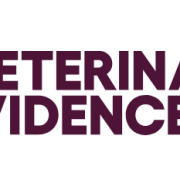Pros and cons of different models of peer review
Peer Review Week is an annual international event celebrating the essential role peer review plays in maintaining scientific quality.
Veterinary Evidence‘s Editorial and Production Assistant, Jennifer Morris, explains some of the pros and cons of different models of peer review.
You can also read her blog on the importance of peer review.
There are different types of peer review, normally separated into three categories:
Double-blind – the author does not know who the reviewers are and the reviewers do not know who the author is.
Single-blind – the reviewers know who the author is but the author does not know who the reviewers are.
Open – the author knows who the reviewers are and the reviewers know who the author is.
Since its inception three years ago, Veterinary Evidence (VE) has operated under the open peer review model, and we have published the reviewers’ names alongside the published paper. The reasoning behind this is that it offers a clear and transparent critique of papers. It also makes conflicts of interest easier to ascertain, allowing people to be open and honest regarding their disclosures. There are other arguments in favour of open peer review, for example Publons suggests that movement from blind to open review is a “significant culture shift” that makes peer review an “activity” the reviewer can be openly recognised for, incentivising the act of peer review itself. It also suggests that “open peer review is an important element of open science, as it leads to increased transparency and accountability in the research process”.
Although at VE we do not publish the reviewer comments alongside the published paper, it can also be argued that this method imposes a kind of quality control on the type of reviews submitted. If a reviewer knows their comments will be published, they are more likely to conduct a thorough and helpful review of the paper. However, there are also some downsides to open peer review, such as reviewers declining to review because they do not want to be identified as the ‘source of a negative review’; or Early Career Researchers being reluctant to openly criticise senior researchers’ work, especially when an area of scientific research has such a small community of researchers.
Even though, according to Publons author Jo Wilkinson, the open model of peer review is being adopted across more journals, most reviewers still prefer the more traditional model of double-blind peer review. In a recent survey we conducted with our reviewers, 73% said they would prefer a double-blind type of peer review, with only 13% saying they preferred the current model. This is not a trend specific to VE. The Publishing Research Consortium carried out a study of 3,000 academics, finding that “71% said that they have confidence in double-blind peer review, while 56% prefer it over any other form of reviewing”.
But why is this? Is it a case of ‘this is how we have done it for 200 years’ and people being scared of change? In a world of online profiles and instant messaging where people’s views are available to everyone at the click of a button, do reviewers really have the right not to be held accountable for their critiques? And how blind can a review truly be when sometimes writing style or specificity of the content will ‘give away’ the author or reviewer’s identity?
What is apparent, however, is that reviewers still want to exercise their right to anonymity, and there are some advantages to blind review. The publisher Wiley argues that blind review eliminates any kind of bias that aspects such as gender, affiliation or social attitudes can impose on a paper, and that both “author and reviewer benefit from some level of protection against criticism”.
Papers should be assessed on the merit and clarity of the content alone. As a journal, VE acknowledges its responsibility to make its reviewers feel comfortable with the task assigned to them. With that in mind, Veterinary Evidence will consider adopting a double-blind model.
It is important to stress that peer review is not an exact science – by definition alone it is a critical appraisal of an author’s ideas, and therefore a judgemental comment that may conflict with another’s assessment of the work. Although it is an essential part of the publication process assuring a journal’s academic rigour, peer review will always be flawed and subject to debate because it is a system based on opinion and people’s good will. For the most part however, and certainly from a Veterinary Evidence editor’s perspective, peer review is there to help. When we asked reviewers in our survey what motivates them to review a paper for a journal, they responded with comments such as:
“I am interested in what people are researching and writing on in my subject area.”
“To ensure highest standards possible for publications in veterinary medicine.”
“Giving back to the veterinary community.”
“The desire to make a contribution in the field.”
Peer review is there to help your paper be the best that it can be, and 99% of the time it is being conducted by people who genuinely have an invested interest in the area of veterinary medicine you are contributing to.
As a reviewer, you are helping to advance science within your subject area by providing crucial feedback to authors. Your review is vital to improving the quality and scientific standard of papers submitted to and published in VE, therefore you are playing a very real part in progressing your area of research. If you are interested in reading more and becoming a reviewer, please see our reviewer guidelines.




Leave a Reply
Want to join the discussion?Feel free to contribute!